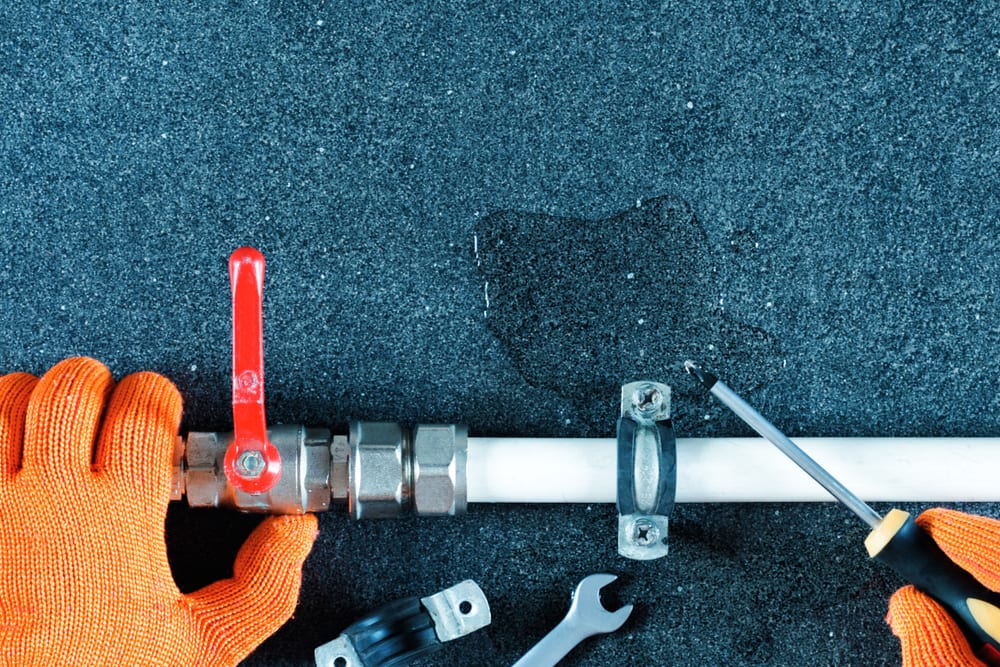Just how to Examine If Your House Has a Concealed Leak
Just how to Examine If Your House Has a Concealed Leak
Blog Article
This post listed below involving Hacks to detect leaks is absolutely interesting. Don't skip it.

Early discovery of leaking water lines can minimize a potential calamity. Some tiny water leakages might not be visible.
1. Take A Look At the Water Meter
Every house has a water meter. Examining it is a surefire manner in which assists you uncover leaks. For beginners, switch off all the water sources. Make sure no one will certainly purge, use the faucet, shower, run the cleaning machine or dishwashing machine. From there, go to the meter and also watch if it will transform. Since no person is using it, there must be no activities. That shows a fast-moving leakage if it moves. If you discover no modifications, wait a hr or 2 as well as examine back once more. This means you may have a sluggish leakage that can also be below ground.
2. Examine Water Consumption
If you detect abrupt modifications, in spite of your consumption being the same, it means that you have leakages in your plumbing system. An unexpected spike in your bill shows a fast-moving leakage.
A steady rise every month, even with the same habits, reveals you have a sluggish leakage that's likewise slowly rising. Call a plumber to completely check your property, specifically if you feel a cozy area on your flooring with piping beneath.
3. Do a Food Coloring Examination
30% comes from toilets when it comes to water usage. Test to see if they are running appropriately. Decrease specks of food shade in the tank and also wait 10 minutes. There's a leakage between the container and dish if the color in some way infiltrates your bowl during that time without flushing.
4. Asses Outside Lines
Do not forget to check your outdoor water lines as well. Must water permeate out of the connection, you have a loose rubber gasket. One tiny leak can squander heaps of water and also increase your water costs.
5. Inspect and Analyze the Situation
Homeowners ought to make it a behavior to check under the sink counters and also inside cabinets for any bad odor or mold development. These 2 warnings show a leakage so prompt focus is needed. Doing regular inspections, also bi-annually, can conserve you from a significant trouble.
If you know your residence is already old, keep a careful eye on your heating systems, tubes, pipes and so on. Look for stainings and also deteriorating as the majority of pipes as well as appliances have a life expectancy. They will certainly additionally normally wear away because of tear and also put on. If you presume dripping water lines in your plumbing system, do not wait for it to rise. Call a specialist plumber as soon as possible so you don't end up with a terrible mess in your home.
Early detection of dripping water lines can alleviate a prospective disaster. Some little water leakages may not be noticeable. Inspecting it is a surefire way that aids you discover leaks. One little leakage can throw away bunches of water and also surge your water expense.
If you think leaking water lines in your plumbing system, don't wait for it to escalate.
WARNING SIGNS OF WATER LEAKAGE BEHIND THE WALL
PERSISTENT MUSTY ODORS
As water slowly drips from a leaky pipe inside the wall, flooring and sheetrock stay damp and develop an odor similar to wet cardboard. It generates a musty smell that can help you find hidden leaks.
MOLD IN UNUSUAL AREAS
Mold usually grows in wet areas like kitchens, baths and laundry rooms. If you spot the stuff on walls or baseboards in other rooms of the house, it’s a good indicator of undetected water leaks.
STAINS THAT GROW
When mold thrives around a leaky pipe, it sometimes takes hold on the inside surface of the affected wall. A growing stain on otherwise clean sheetrock is often your sign of a hidden plumbing problem.
PEELING OR BUBBLING WALLPAPER / PAINT
This clue is easy to miss in rooms that don’t get much use. When you see wallpaper separating along seams or paint bubbling or flaking off the wall, blame sheetrock that stays wet because of an undetected leak.
BUCKLED CEILINGS AND STAINED FLOORS
If ceilings or floors in bathrooms, kitchens or laundry areas develop structural problems, don’t rule out constant damp inside the walls. Wet sheetrock can affect adjacent framing, flooring and ceilings.
https://www.servicemasterbyzaba.com/blog/how-to-detect-water-leakage-in-walls/

We hope you enjoyed our piece on Finding hidden leaks. Thanks so much for taking time to read through our blog post. For those who enjoyed our blog posting plz be sure to share it. Thank you for your time spent reading it.
Report this page